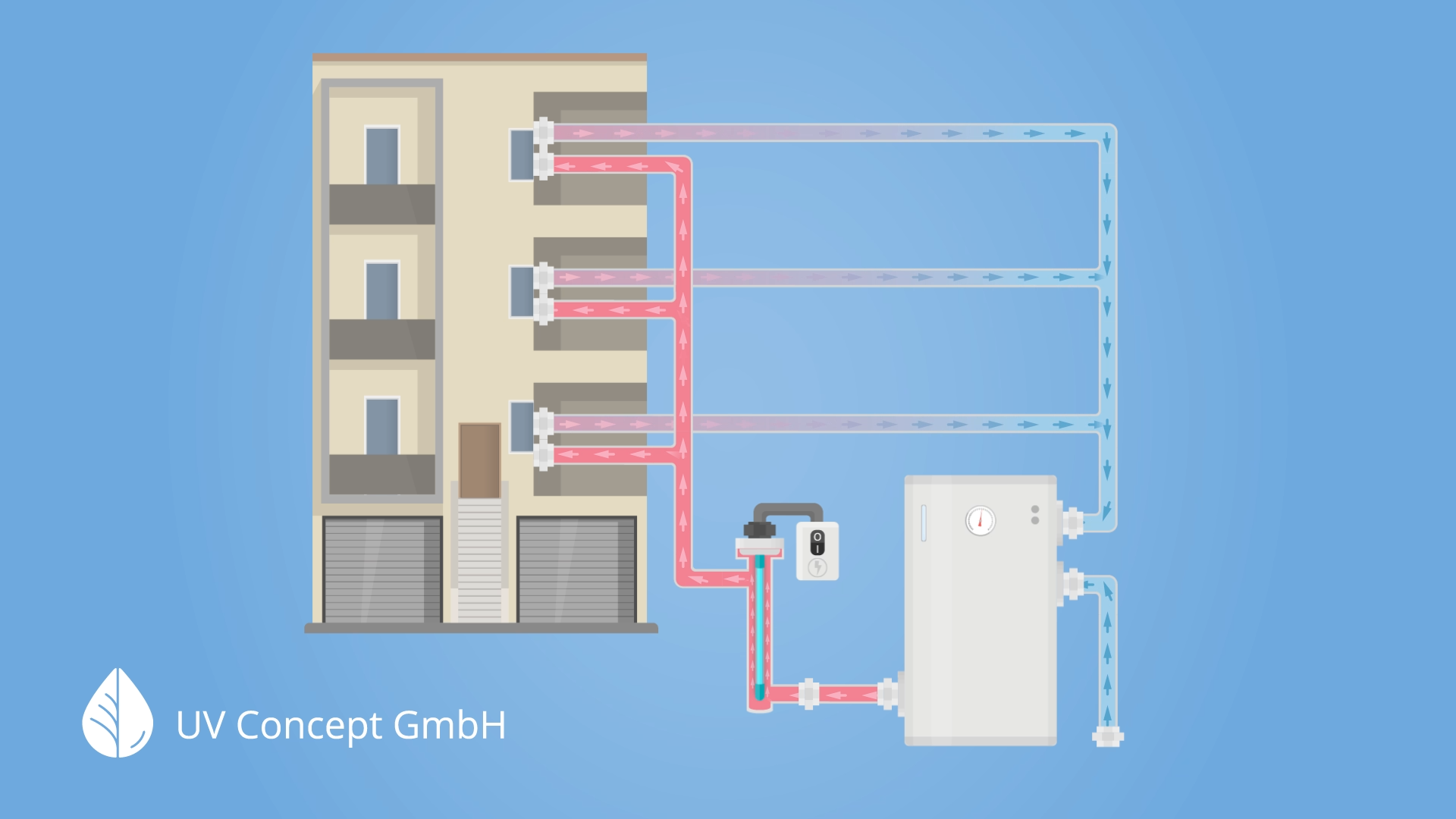UV System against Legionella: Legionella pose a serious threat to health, especially in hot water systems. These microorganisms can multiply in water pipes and lead to dangerous respiratory diseases such as Legionnaires' disease. To ensure safety in hot water systems, an effective disinfection method is essential. Here, the UV system offers one of the most reliable and environmentally friendly solutions.
Legionella: An Invisible Danger in Hot Water Systems
Legionella are waterborne bacteria that prefer to multiply in warm, humid environments. Hot water systems in buildings, where water reaches temperatures between 25 and 50 degrees Celsius, are particularly susceptible to Legionella. Under these conditions, the bacteria find optimal growth conditions, increasing the risk of infections. Legionella can spread into the air via tiny water droplets, known as aerosols, which are created during showering or by air conditioning systems, and can be inhaled. An infection with Legionella can lead to Legionnaires' disease, a severe pneumonia that is especially dangerous for immunocompromised individuals.
Traditional Methods of Combating Legionella
Traditionally, thermal disinfection has been used as the primary method to combat Legionella. This involves heating the water to temperatures above 60 degrees Celsius to kill the bacteria. However, this method is associated with significant disadvantages:
- High energy consumption: Heating large amounts of water to high temperatures requires a lot of energy, which significantly increases operating costs and burdens the environment.
- Material wear: The high temperatures can lead to accelerated wear of the pipes and other components of the hot water system, which leads to higher maintenance costs in the long term.
- Incomplete disinfection: In some cases, Legionella can survive in isolated areas of the water pipes, especially if the water is not evenly heated to the required temperature.
The UV System: A Modern and Environmentally Friendly Alternative
In light of the disadvantages of thermal disinfection, UV disinfection has established itself as an effective and gentler alternative for combating Legionella. A UV system uses ultraviolet light in the UV-C spectrum to destroy the DNA of microorganisms like Legionella, rendering them harmless. This method offers numerous advantages:
- Energy efficiency: Unlike thermal disinfection, UV disinfection requires only a fraction of the energy. The UV system operates without heating the water, making it a cost-effective and environmentally friendly solution.
- Gentle treatment: Since no high temperatures are required, the material of the water pipes remains intact, extending the lifespan of the entire system.
- High effectiveness: The UV system is highly effective against Legionella and other microorganisms. Its efficiency is confirmed by the worksheet W551 of the DVGW, the German Association for Gas and Water.

Functionality and Installation of the UV System
The UV system is directly integrated into the hot water circuit. This means that the water is routed through the UV system and disinfected with each pass. The installation is simple and can be integrated into existing hot water systems. Once installed, the UV system operates continuously, ensuring that the water is always free from Legionella and other harmful microorganisms.
Advantages of Integration into the Hot Water Circuit
- Continuous Disinfection : Since the water is routed through the UV system with each pass, continuous disinfection is ensured. This provides continuous protection against Legionella.
- No Chemical Use : UV disinfection works without the use of chemicals, meaning no harmful residues remain in the water. This is particularly beneficial for human consumption and the environment.
- Immediate Effect : Disinfection occurs in real-time as soon as the water flows through the UV system. There are no waiting times before the water can be safely used.
Additional Measures for Legionella Prevention
While the UV system plays a central role in combating Legionella, supplementary measures should be taken to further minimize the risk of contamination. Regular flushing of the hot water system is an effective method to remove stagnant water that could serve as a potential reservoir for Legionella. Regular flushing prevents the formation of biofilms and other deposits in the pipes that can serve as a breeding ground for bacteria.
Long-term Efficiency and Sustainability
The use of a UV system for Legionella control offers not only short-term benefits but also long-term sustainability. By reducing energy consumption and material wear, operating costs are lowered while protecting the environment. Furthermore, UV disinfection is a future-proof solution that meets high water hygiene standards while protecting the health of users.
Conclusion: Safety and Efficiency with the UV System against Legionella
The UV system against Legionella is a modern, efficient, and environmentally friendly solution for combating Legionella in hot water systems. Compared to traditional thermal disinfection, UV disinfection offers numerous advantages, including lower energy consumption, gentle treatment of materials, and high effectiveness against harmful microorganisms. By integrating into the hot water circuit, continuous disinfection is ensured, significantly reducing the risk of Legionella infection. Complementary measures such as regular flushing of the system further contribute to safety. Overall, the UV system represents a reliable and sustainable solution that meets the highest standards in water hygiene.
 Phone: +49 3641 327 9697
Phone: +49 3641 327 9697
 Official Purion dealer
Official Purion dealer
 Europe-wide delivery
Europe-wide delivery


